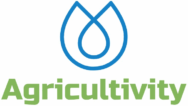If you’re interested in urban agriculture and want to explore innovative ways of growing plants without soil, then hydroponics might be the perfect solution for you. In Agricultivity’s beginner’s guide, we will introduce you to the concept of hydroponics and how it can revolutionize urban farming.
What is Hydroponics?
Hydroponics is a soilless method of growing plants in water-based nutrient-rich solutions, without the use of traditional soil. Instead, plants are grown in a variety of inert growing media such as perlite, coco coir, or even air. Nutrients are directly provided to the plants’ root systems through the water, allowing for precise control over the growing conditions and maximizing plant growth.
Why Choose Hydroponics for Urban Farming?
Urban agriculture is gaining popularity as a way to grow fresh produce in densely populated areas where traditional farming is not feasible. Hydroponics offers several advantages for urban farming:
1. Space Efficiency:
Hydroponic systems are highly space-efficient, making them ideal for urban environments where land is limited. Vertical hydroponic systems, such as vertical towers or walls, can maximize space utilization and allow for high-density planting.
2. Water Conservation:
Hydroponics uses significantly less water compared to traditional soil-based farming. The water in a hydroponic system is recirculated, reducing water waste and making it a more sustainable option for urban farming.
3. Nutrient Control:
With hydroponics, growers have precise control over the nutrients provided to the plants. This allows for optimal nutrient uptake and can result in faster growth and higher yields compared to traditional farming methods.
4. Year-Round Production:
Hydroponics allows for year-round production of crops, regardless of the season or weather conditions. This makes it possible to have a constant supply of fresh produce in urban areas throughout the year.
Getting Started with Hydroponics
If you’re interested in trying hydroponics for your urban farm, here are some basic steps to get you started:
1. Choose a Hydroponic System:
There are various types of hydroponic systems available, such as nutrient film technique (NFT), aeroponics, and deep water culture (DWC). Research and choose a system that suits your space, budget, and crop requirements.
2. Select a Growing Medium:
Hydroponic systems require a growing medium to support the plants. Common growing media used in hydroponics include perlite, coco coir, vermiculite, and expanded clay pebbles. Choose a growing medium that is suitable for your chosen hydroponic system and crop.
3. Provide Nutrient Solutions:
Nutrient solutions are a crucial component of hydroponics. They provide the essential elements that plants need to grow, such as nitrogen, phosphorus, and potassium. Research and follow the recommended nutrient solution for your specific crop, and monitor and adjust nutrient levels regularly.
4. Monitor and Manage pH and EC:
pH and electrical conductivity (EC) are important parameters to monitor in hydroponics. pH affects nutrient availability, and EC measures the concentration of nutrients in the solution. Regularly monitor and adjust pH and EC levels to ensure optimal plant growth.
5. Provide Sufficient Light:
In hydroponics, plants may not receive natural sunlight, so it’s important to provide sufficient artificial light for photosynthesis. LED grow lights are commonly used in hydroponic systems, as they are energy-efficient and can be customized for different plant growth stages. Research the light requirements of your specific crop and choose appropriate LED grow lights accordingly.
6. Maintain Proper Air Circulation:
Plants grown in hydroponic systems need proper air circulation to prevent the growth of pathogens and ensure healthy root development. Use fans or air pumps to provide adequate air movement and oxygenation to the plant roots.
7. Monitor and Manage Pest and Disease Control:
Just like traditional farming, hydroponic systems are susceptible to pests and diseases. Regularly monitor your plants for any signs of pests or diseases and take appropriate measures, such as using beneficial insects or organic pest control methods, to prevent or manage any issues.
8. Harvest and Enjoy Your Crops:
Once your plants have reached the desired maturity, it’s time to harvest and enjoy the fruits of your labor! Harvest your crops carefully and enjoy the fresh and nutritious produce that you have grown using hydroponics.
In Conclusion
Hydroponics is an innovative and efficient method of soilless urban farming that offers many advantages for urban agriculture. With precise control over growing conditions and year-round production, hydroponics can revolutionize the way we grow food in urban areas. By following the basic steps and best practices outlined in this beginner’s guide, you can get started with hydroponics and embark on a rewarding journey of growing fresh and healthy produce in your urban farm.
Remember to choose the right hydroponic system, growing medium, nutrient solutions, and provide adequate light, air circulation, and pest control for optimal results. With proper care and management, you can enjoy a successful hydroponic urban farming experience and contribute to sustainable agriculture in urban environments.
We hope this beginner’s guide has provided you with valuable insights into the world of hydroponics and inspired you to explore this exciting method of soilless urban farming. Happy hydroponic farming!





